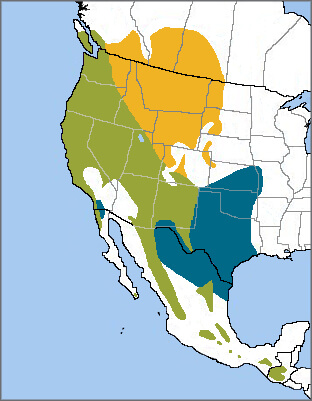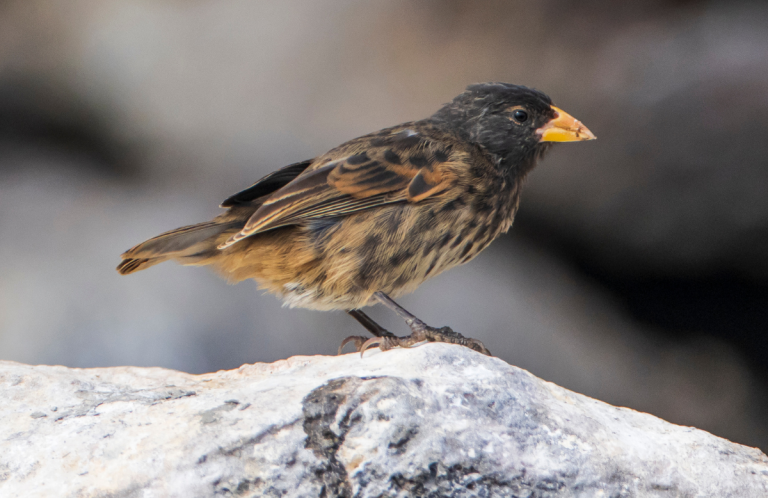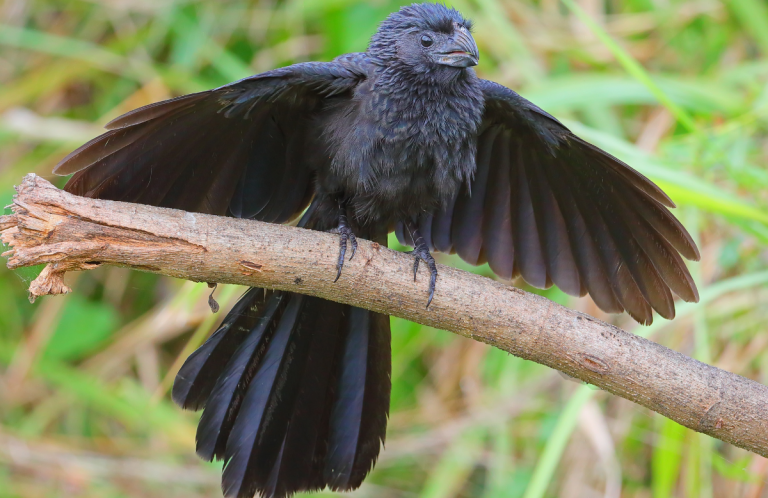 Ornithologist Edward Forbush commented in 1929: "[The Towhee] is a ground bird — an inhabitant of bushy land. No other sparrow seems to be so wedded to life in thicket and tangle…."
Ornithologist Edward Forbush commented in 1929: "[The Towhee] is a ground bird — an inhabitant of bushy land. No other sparrow seems to be so wedded to life in thicket and tangle…."
Like other sparrows such as the Saltmarsh and Sagebrush, the Spotted Towhee, found from southwestern Canada through the western United States and in the mountains of Mexico and Guatemala, is the result of a taxonomic "split." The Spotted Towhee and its close relative, the Eastern Towhee, were once considered one species — the Rufous-sided Towhee — but were recognized as distinct species in 1995. One of the distinguishing features of the Spotted Towhee is the white spotting splashed over its wings and back. (The Eastern Towhee is dark-backed.)
A Tangled Teapot of Towhees
The word "towhee" mimics the loud whistle of the Eastern Towhee. Although the Spotted Towhee retained this name after the species split, its call is actually more of a cat-like mew, reminiscent of a Gray Catbird. (Compare the calls below.)
However, the Spotted Towhee's song sounds similar to the well-known "drink-your-tea" song of its eastern cousin. This is why a group of towhees is referred to as a "teapot." Another nickname for a group of towhees, a "tangle," is a nod to the bird's preferred habitat of thick shrubbery.
Wide-ranging Family
Twenty-one Spotted Towhee subspecies range across the West, from Canada south to Guatemala. Like other wide-ranging bird species such as the Dark-eyed Junco and Horned Lark, the Spotted Towhee can be quite variable in appearance. However, all share the same spotted wings, backs, and long, dark tails with conspicuous white corners. Male and female Spotted Towhees are sexually dimorphic (genders differ in appearance): Females are generally paler and browner than males.
Spotted and Eastern Towhees regularly hybridize where their ranges meet, throughout the central Great Plains states. In parts of central Mexico, Spotted Towhees also hybridize with another close relative, the endemic Collared Towhee.
Sign up for ABC's eNews to learn how you can help protect birds
Shy Ground-Feeder
A noisy, distinctive scratching in thick underbrush often gives away a Spotted Towhee's presence. This ground-feeding bird forages with a style similar to the White-throated Sparrow, hopping forward and backward while raking the ground with both feet to reveal insects and seeds.
When disturbed, the female Spotted Towhee prefers to run away from her nest like a mouse rather than fly, similar to other secretive birds that nest on or near the ground, including the Grasshopper Sparrow and Eastern Meadowlark. This habit makes towhees particularly vulnerable to predation by outdoor cats, especially in suburban areas.

Juvenile Spotted Towhee. Photo by Pacific Northwest, Shutterstock
Spotted Towhee nests are often parasitized by Brown-headed or Bronzed Cowbirds, reducing their nesting success. In California, some Spotted Towhees must also contend with brood parasitism by California Quail, which often "dump" their eggs in other species' nests.
Juvenile towhees have dull, streaky plumage, revealing their sparrow heritage, but by late August have molted into more distinctive adult feathering.
Conservation for Common Species
Although the Spotted Towhee remains common throughout its range, it is still subject to the same threats causing bird declines throughout the Americas: habitat loss, invasive species, collisions, and more.
ABC's advocacy programs, including Cats Indoors and Glass Collisions, continue work to reduce or remove some of the challenges facing Spotted Towhees across their wide range. With your help, ABC can keep stable-trending species such as the Spotted Towhee common, and turn around declines of more threatened species that share its habitat.
Donate to support ABC's conservation mission!



















































